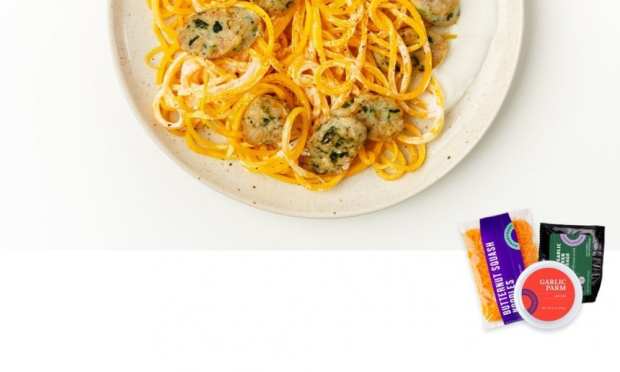Innovating New Direct Paths To Customers For DTC Startups

The trouble with direct-to-consumer (DTC) brands is that the name belies how hard it actually is to reach and recruit the consumer. This is particularly hard for unknown emerging brands — and it gets exponentially harder the more crowded the field gets with competitors. When everyone is trying to reach the consumer directly, the mounting noise level make it hard for any individual brand to make itself heard over the din.
Which is what drove DTC food brand Hungryroot to open its first pop-up store this spring in New York City, according to Mollie Chen, vice president of brand and customer experience. The point of direct to consumer is, after all, first and foremost to be direct.
“We’re hoping the store will put us in touch with more customers and real-time feedback,” she said in an interview. “We want to know how customers behave differently in stores, and what we can learn in real life.”
Food is a tricky vertical — everyone has to eat, of course, but filling that need is a competitive race. Hungryroot’s secret ingredient, so to speak, is that it is attempting to merge two categories that generally exist in separate circles: convenient, pre-packaged and easy to prepare foods; and healthy, plant-based eating. Plenty of brands go after one or the other in the race to win consumers hearts through their stomachs, but Hungryroot, according to Chen, is the brand that best delivers on that promise.
The firm’s online model is familiar in the world of DTC offerings. It is a subscription-based service, though the order is customizable and the consumer can choose what size delivery they are looking for — a small order has 11 items and costs $69; a medium order with 16 items is $99 and a large order has 21 items and costs $129. The subscription can be cancelled anytime. Online grocery delivery, however, is a tough market, and Hungryroot’s services find it competing with meal kit options like HelloFresh on one side and grocery delivery offerings like Instacart or Prime Grocery on the other.
But Hungryroot is a unique offering with a unique pedigree. Chen was one of the founding employees of Birchbox, and says that while it might not seem an obvious connection, there is an awful lot the world of DTC food can learn from the world of DTC cosmetics.
For example, she said, selling customers what they want is not enough — and an awful lot of retailers can actually do that. Instead, what Birchbox quickly realized was that up-and-coming brands can also show customers the things they want — but didn’t know they wanted when they first arrived. That, she said, is the power of using things like samples, to take the risk out of experimentation and give the customer a chance to attach to a really unique value proposition that the brand can unlock for them.
“Nobody thinks they are going to like black-bean brownie batter or almond chickpea cookies, for example, and they are best-sellers,” she said. “And even I had never heard of yuba noodles, which are hand-cut strips of tofu, before I started here.”
The pop-up store, she said, is a chance to expand that educational and discovery experience — and was timed to run through the end of June to create a convenient place to introduce customers and the wider New York City area to the firm’s latest array of products.
And thus far, the spot has been a draw — in the first week Hungryroot saw 2,1000 customers stop in for samples in the Flat Iron district pop-up, and sold to over 3,500. They come for the cookie dough samples, she said, and leave with veggies and meal preparations. If the shop continues to perform, the hope is Hungryroot will be able to expand into more stores.
According to internal reporting, sales were up 800 percent in 2018 and hit $30 million. Engagement is high, with 35 percent of customers submitting product-level preferences.
And at the end of the day, Chen said, the company believes those factors will be what helps Hungryroot stand out, and even go the distance, in a crowded field.
“There are meal kits, there are grocers, there are meal deliveries and there are online grocers. But we don’t think any of them are solving for health and convenience the way we are.”
